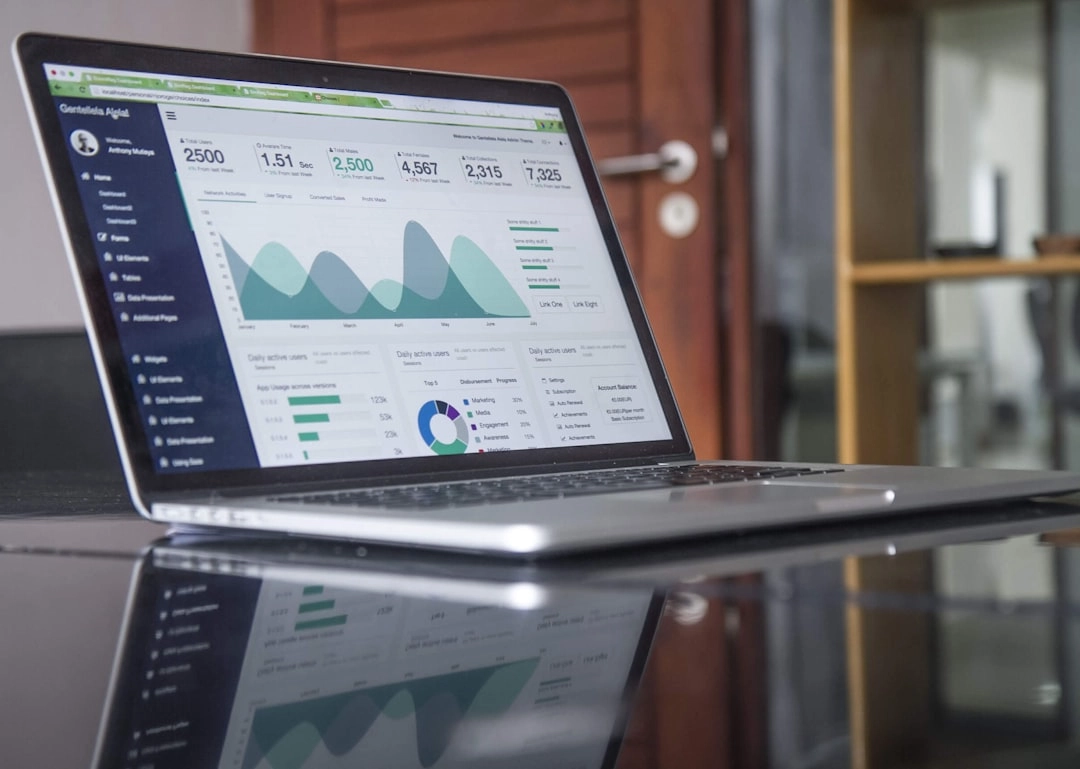In a nutshell:
- Predictive analytics is a powerful tool for data analysts to extract insights and make informed decisions.
- Understanding predictive modeling, statistical concepts, and data preprocessing is crucial for mastering predictive analytics.
- Techniques and tools like regression analysis, classification algorithms, and time series analysis are essential for predictive modeling.
- Interpreting and implementing predictive models in real-world scenarios can drive data-informed decisions.
- Predictive analytics offers numerous benefits but also presents challenges like data quality and continuous learning.
In the ever-expanding universe of data, analysts find themselves navigating vast oceans of information, searching for hidden treasures that can unlock the secrets of the future. But fear not, for we have a powerful tool in our arsenal—predictive analytics, the compass guiding data professionals through these uncharted waters.
At its core, predictive analytics is like having a crystal ball that lets us peer into the future, except way cooler (and statistically sound, of course). By harnessing the power of data, advanced statistical techniques, and machine learning algorithms, we can unravel intricate patterns and relationships buried deep within our datasets. It’s like being a data detective, uncovering invaluable insights that were once obscured by the sheer volume and complexity of information.
For us data nerds, mastering the fundamental concepts, techniques, and tools of predictive analytics is no longer just a party trick – it’s an essential survival skill. In our increasingly data-driven world, the ability to build, validate, and deploy predictive models effectively can mean the difference between riding the wave of success or getting totally washed out by the competition.
But fear not! The realm of predictive analytics need not be shrouded in mystery. This blog post aims to be your trusty sidekick, demystifying the subject matter and offering practical insights into real-world applications.
We’ll explore powerful tools and techniques, empowering you to unlock the true potential of your data and derive actionable insights that can propel your organization toward greatness.
The Fundamentals of Predictive Analytics
Knowledge of foundational concepts in predictive analytics helps translate raw data into meaningful information that can predict future outcomes, identify trends, and inform decisions.

Photo by Jakub Żerdzicki on Unsplash
Understanding Predictive Modeling and Its Role in Data Analysis
Predictive modeling employs statistical algorithms and machine learning techniques to predict future outcomes based on historical and current data. For example, predictive modeling might anticipate customer behavior, predict machinery breakdowns, or forecast sales figures.
Data analysis holds a powerful tool: predictive modeling. It doesn’t just reveal hidden patterns in complex data — it unlocks the ability to forecast future trends and probabilities. It allows for proactive decision-making, as it provides an indication of what will happen in the future based on what has happened in the past. Imagine leveraging historical data to make proactive decisions, one step ahead of the curve. That’s the magic of predictive analytics.
Key Statistical Concepts and Techniques for Predictive Analytics
Understanding certain statistical concepts will help you to master predictive analytics. Some common statistical techniques used in predictive analytics include:
- Regression analysis: A technique used to investigate the relationship between variables.
- Classification algorithms: This procedure determines the category or class of given data points.
- Correlation: This notion measures the relationship between variables and variance, which identifies how much a set of data points differ from each other and from their mean.
Data Preprocessing and Feature Engineering for Predictive Modeling
Data preprocessing is a significant phase in predictive modeling, as the quality of data used can greatly influence the accuracy of predictions. This process involves cleaning, transforming, and organizing raw data into an understandable format.
Feature engineering involves creating new variables or modifying existing variables to improve the performance of predictive models. This might mean adding, deleting, or transforming data to better fit the model.
By examining predictive modeling, key statistical concepts, and the crucial steps of data preprocessing and feature engineering, we can begin to discern how predictive analytics transforms raw data into future predictions. This sets the stage for us to continue to learn predictive analytics and its applications in the next sections.
Techniques and Tools for Predictive Analytics
A strong foundation in predictive analytics is the springboard to its practical applications. Hands-on learning, utilizing a diverse toolkit of techniques, empowers you to tackle real-world scenarios confidently.
Regression Analysis for Predictive Modeling
Regression analysis is a commonly employed statistical process for estimating the relationships among variables. It is often used in predictive modeling, as it can help construct a mathematical model that represents real-world relationships between an independent and dependent variable, which can predict future outcomes.
Classification and Clustering Algorithms for Data Analysis
Classification and clustering are two essential tasks in predictive analytics. Classification algorithms predict or explain a categorical response variable, such as whether an email is spam or not. On the other hand, clustering algorithms are useful when there isn’t a particular target or outcome variable to predict. These algorithms allow us to identify and group similar data points together, thereby uncovering patterns and relationships within our data.
Time Series Analysis for Trend Forecasting
Time series analysis is a statistical technique for analyzing time series data, or trend analysis. It allows data analysts to extract meaningful statistics and characteristics from the data to predict future values based on previously observed ones. This is ideal for forecasting business trends such as sales, inventory, and stock prices.
Utilizing Machine Learning Frameworks and Libraries
There are several machine learning frameworks and libraries, such as Python’s sci-kit-learn, TensorFlow, and others, that are beneficial for conducting predictive analytics. These provide ready-to-use and customizable resources that can greatly simplify the process of creating, testing, and deploying predictive models.
Using Low-Code, Automated Machine Learning Platforms
For those without a deep technical background or coding skills, low-code, automated machine learning platforms, such as Pecan, can be a game-changer. These platforms automate the entire predictive analytics process, from data preparation to model deployment, making it easily accessible to a wider audience.
The core idea of mastering predictive analytics is to apply the right technique with the right tool, in the right context.

Building and Validating Predictive Models
The next major stepping stone in our journey to learn predictive analytics involves building and validating our predictive models. This process includes each step, from collecting and preparing our data to cross-validation and performance assessment.
Data Collection and Preparation
Data collection and preparation are perhaps the most time-consuming aspects of the predictive modeling process, but doing them correctly is crucial for the success of your model. It involves gathering relevant data, cleaning it (removing outliers, dealing with missing data), transforming it into a suitable format, and splitting it into training and testing sets for later use.
Model Selection and Evaluation Metrics
After the data preparation comes the selection of the predictive model that is best suited to your data and prediction goals. There are numerous types of regression, classification, and clustering models to choose from, each with its own strengths and weaknesses. Once you’ve selected a model, you must evaluate it using suitable metrics. For regression problems, you might use the coefficient of determination (R²), while for classification problems, accuracy, precision, recall, or F1 score might be appropriate.
Cross-Validation and Performance Assessment
No matter how you’ve prepared your data and selected your model, the final test of a predictive model is how well it performs. Cross-validation is a common technique used in predictive modeling to assess a model’s performance on a separate data set. It involves splitting the data into several subsets and then training and validating the model multiple times, with each subset used as the validation set once. This is crucial to confirm that your model can generalize well to unseen data.
In the end, building an effective predictive model is a continuous effort. It requires a deep dive into the data, meticulous selection of the right model and metrics, and rigorous validation to guarantee performance.

Photo by Jakub Żerdzicki on Unsplash
Interpreting and Implementing Predictive Models
Interpreting the results produced by your predictive model and understanding the importance of each feature in making predictions will help you to know how to deploy these models in real-world scenarios.
Model Interpretation and Feature Importance in Predictive Analytics
After building a predictive model, interpreting its output is a necessary step. This involves identifying the relevance and impact of different variables on the predictions. One aspect of this interpretation is evaluating feature importance, which ranks the variables based on their influence on the model’s predictions. Knowing the feature importance aids in grasping how the model makes decisions, informing strategy, and effectively communicating the model’s behavior to stakeholders. This knowledge is key for deploying models in real-world scenarios, ensuring they are both accurate and interpretable.
Deploying Predictive Models in Real-World Scenarios
Once a predictive model is built, interpreted, and validated, the next step involves deploying the model to solve real-world problems. This step essentially involves using your model to make predictions on new data.
When implementing a predictive model in real-world scenarios, consider the context of the application, whether it’s predicting customer churn in a business scenario or forecasting stock prices in the finance sector. The implementation stage also involves monitoring the model to ensure its performance and updating it as necessary to reflect new data and trends.
Using Predictive Models in Decision-Making
Predictive models have a powerful influence on business decision-making. By providing informed insights about future trends or events, these models offer a factual basis for strategic decisions.
For example, a predictive model might indicate a high likelihood of customer churn in the next quarter. This knowledge can drive proactive strategies for improving customer retention, such as offering special deals, improving customer service, and addressing known issues with a product or service.
In addition to longer-term planning, predictive models can also play a critical role in real-time decision-making. With the ongoing digital transformation, the speed at which data is generated and collected has significantly increased, contributing to the growing importance of real-time analytics. By providing immediate predictions based on the latest data, real-time predictive models can help businesses respond quickly to rapidly changing situations.
For example, in e-commerce, real-time predictive models can dynamically adjust advertisement placements based on the latest user behavior data. If a user is browsing through a certain product category, the model can immediately predict the user’s interest and adjust the advertisements accordingly. Similarly, in logistics, real-time predictive models can help optimize delivery routes based on the latest traffic data. Real-time predictions can significantly increase a business’s responsiveness and agility, thereby giving it a competitive edge.
Thus, predictive models not only indicate what may happen in the future but also provide guidance on how to respond to potential future events. This results in data-informed decisions that can improve business outcomes.
Exploring the Potential Benefits and Challenges of Predictive Analytics
While there are many benefits to understanding and using predictive analytics, it does present some challenges.
Potential Benefits of Predictive Analytics
One of the primary benefits of predictive analytics is its ability to utilize existing data to anticipate future trends, behaviors, and events. This allows organizations to make proactive, data-informed decisions, thereby increasing operational efficiency and strategic planning. By leveraging predictive analytics, businesses can enhance customer relationships by predicting customer behavior and creating tailored marketing strategies. Additionally, predictive analytics can help identify potential risks and opportunities, allowing for better risk management and strategic planning.
Challenges in Implementing Predictive Analytics
Data quality and reliability are crucial for accurate predictions. Collecting and preprocessing large amounts of data can be labor-intensive, often requiring sophisticated software and skilled analysts. Additionally, predictive analytics models are only as good as the data they’re based on, meaning that outdated or inaccurate data can lead to misleading results. Furthermore, the rapidly evolving field of predictive analytics requires continuous learning and adaptation to keep up with new techniques and tools.
One must weigh these potential benefits and challenges before delving into the world of predictive analytics. Knowing what to expect can help you leverage the power of predictive analytics most effectively.

Photo by Jakub Żerdzicki on Unsplash
Practical Applications of Predictive Analytics
Predictive analytics has a wide range of applications across various sectors. In the modern data-driven environment, practical applications of predictive analytics highlight its relevance.
Predictive Maintenance in Manufacturing and Industrial Operations
In the realm of manufacturing and industrial operations, predictive analytics can predict machinery failures and schedule maintenance accordingly—a concept known as predictive maintenance. This helps to reduce unexpected downtime and increase operational efficiency.
Customer Churn Prediction and Segmentation in Marketing and Sales
In the marketing and sales sector, predictive analytics is used to predict customer churn and conduct customer segmentation. It can help to identify customers who are likely to stop using a product or service, enabling businesses to target their retention efforts more effectively and design personalized marketing campaigns.
Financial Risk Assessment and Fraud Detection in Banking and Finance
Predictive analytics can assess financial risks and detect fraud in the finance sector. Financial institutions can predict the likelihood of a loan default and detect fraudulent transactions, thereby mitigating losses and enhancing customer trust.
Through these applications, we can see how predictive analytics provides data-driven insights that can profoundly impact decision-making across different sectors. The ability to anticipate future outcomes empowers businesses to be proactive and strategic and make informed decisions that drive growth and efficiency.
Understanding Predictive Analytics Opens Opportunities and Maximizes Potential
Diving into predictive analytics opens a world of opportunities to harness data for informed decision-making.
As you explore fundamental concepts and tools, a guided walkthrough can enhance your understanding and application. Arrange a demo call with our specialists to see Pecan in action. We’ll demonstrate how our platform simplifies predictive analytics, making it accessible and effective for your unique needs. Book your demo today and embark on a transformative data journey!





